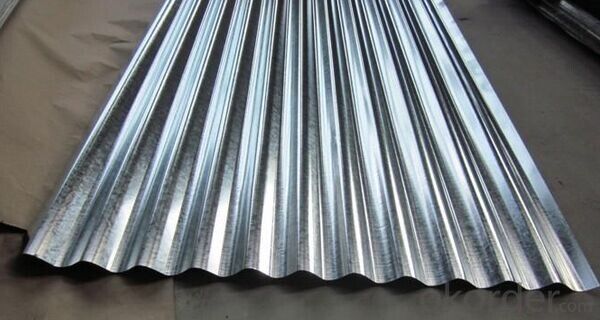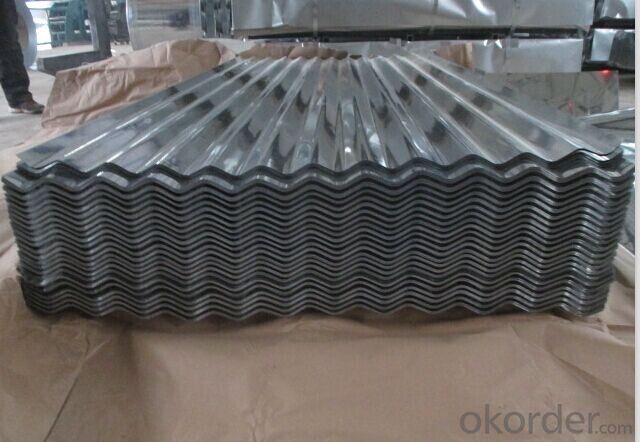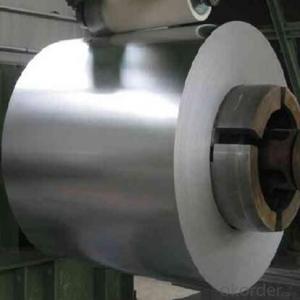Hot Dipped Galvanized Strip/Hot Dipped Galvanized Steel
- Loading Port:
- Tianjin
- Payment Terms:
- TT OR LC
- Min Order Qty:
- 50 m.t.
- Supply Capability:
- 10000 m.t./month
OKorder Service Pledge
OKorder Financial Service
You Might Also Like
Product Details
Basic Info.
Model NO.:0.12-1.5*10-1250mm
Standard:ASTM, JIS, GB, AISI, DIN, BS
Steel Grade:Q235
Certification:ISO, SGS, BV
Surface Treatment:Galvanized
Technique:Cold Rolled
Application:Flange Plate
Edge:Slit edge
Stock:Stock
Spangle:Large/Small/Minimized/Regular
Zinc Coating:60-275G/M2
Thickness:0.12-4.0
Width:20-600mm 600-1500mm
Coil ID:508mm/610mm
Base Materials:Cold/Hot Rolled Steel Coil
Surface:Chromated,Oiled.Anti-Finger Treatment,Phosphate Tr
Grade:SGCC,Sgcd,Dx51d+Z,S220gd+Z,etc.
Weight:1-8mt,Usually 3-5mt
Quality Standard:En10142/En10346/En10169/JIS3302/Astma755m
Export Markets:Global
Additional Info.
Packing:Standard Export Seaworthy Packing
Standard:0.12-1.8*13-1500
Origin:Zhengzhou China (Mainland)
HS Code:72104900
Production Capacity:100000mt Per Year
Product Description
1. Hot dipped galvanized steel description:
Hot dipped galvanized steel is typically a multiple step process that requires a metal workpiece to be fluxed in molten or aqueous zinc ammonium chloride before a layer of zinc is bonded to it. The pure zinc layer then turns into zinc oxide when it is exposed to oxygen, and finally zinc carbonate after exposure to carbon dioxide.
2. Hot dipped galvanized steel technical process
After cleaning and acid pickling, the steel coil is submerged in melted zinc, a chemical reaction permanently bonds the zinc. The zinc actually permanently becomes a part of it and the successive
Layers are a mixture of zinc and iron. Hot dipped galvanized steel is a special type of steel coil used
In a number of different applications within fabrication and manufacturing environments
3. Hot dipped galvanized steel flow chart
Decoiler--- Shearer ----welder ----pre-treatment ----entry looper--- annealing furnace--- zinc pot
---- air cooling tower ----water cooler--- leveller---- post treatment ---exit looper crimper.
4. Hot dipped galvanized steel main usage scope:
Hot dipped galvanized steel is widely used in home appliances, kitchen utensils, handicrafts, construction formwork, granary, revealed rain, chimneys, roof tile, fire shutter doors, construction
Industry, as raw material for the production of corrugated panels, fencing products, drywall
Panel profiles, ventilation systems etc.
5. Hot dipped galvanized steel advantages:
1) Low iron loss, high magnetic flux strength, comes up to the international advance standard
2) Slight thickness difference between the horizontal and the longitudinal direction, promising the high lamination factor
3) Processing Performance: Easily punched and cut, high dimensional accuracy
4) Insulating coating: Uniform color, good insulation, strong adhesively, high heat resistance, high imputrescibility
5) Smooth surface, no rust, no rolling marks, no cold lap, no crease, no bubble cell, no delaminating defects
| Standard | Steel Grades | Application |
| GB/T 2518-2004 | 01 | Common commercial application |
| 02 | For mechanical engagement | |
| 03 | For stamping | |
| 04 | For deep drawing | |
| 220,250,280,320,350 | For structural components | |
| JIS G 3302-1998 | SGCC | Common application |
| SGCD1 | For stamping | |
| SGCD2 | For deep drawing | |
| DIN EN 10142-2000 | DX51D+Z | For common application and mechanical engagement |
| DX52D+Z | For stamping | |
| DX53D+Z | For deep drawing | |
| DIN EN 10147-2000 | S220GD+Z | For structural components |


FAQ:
1. What is the minimum order quantity ?
Our MOQ is 50mt for each size. And we will consider to give more discount if you make big order like 1000 tons and more. Further more, the more appropriate payment term your offer the better price we can provide.
2. How long can we receive the product after purchase?
Usually within thirty working days after receiving buyer’s advance payment or LC. We will arrange the factory manufacturing as soon as possible. The cargo readiness usually takes 15-25 days, but the shipment will depend on the vessel situation.
3. How to guarantee the quality of the products?
We have established the international advanced quality management system,every link from raw material to final product we have strict quality test;We resolutely put an end to unqualified products flowing into the market. At the same time, we will provide necessary follow-up service assurance.
4.What is the validity of your quotation?
Normally 7 days.
5.What is your advantage?
24 hour quick response /Customer oriented/ Credit foremost/ Top quality Excellent
- Q:What are the challenges faced in the recycling of steel coils?
- One of the main challenges in recycling steel coils is the process of separating the different materials that may be attached to the coils, such as plastic or paper. These contaminants need to be removed before the steel can be recycled efficiently. Additionally, the size and weight of steel coils can pose logistical challenges in terms of transportation and storage. Lastly, ensuring that the recycled steel meets the required quality standards and specifications is another challenge faced in the recycling process.
- Q:Can't find it- this is for a physics experiment for youngs modulus done with a steel wire.
- It is the Yield Strenght that you are looking for...that is another word for elastic limit. AND, for steel, it does depend on the variant of steel. Not all types of steel are identical, since steel isn't a pure substance. For Young's modulus (and other stiffness properties), just about all variants have the same values. However, for strength properties like Yield strength and ultimate strength and fatigue strength, it does depend on variant, and is precisely why different recipies exist in AISI standards.
- Q:Can steel coils be stamped?
- Yes, steel coils can be stamped. Stamping is a common manufacturing process used to shape and cut steel coils into desired forms and designs.
- Q:How are steel coils cut and shaped for specific requirements?
- Steel coils are cut and shaped for specific requirements through a process called slitting and forming. Slitting involves cutting the coil into narrower strips using specialized machinery, while forming utilizes presses, rollers, or other tools to shape the steel into desired profiles. These processes allow manufacturers to tailor the dimensions and shape of the steel coils to meet specific industry and customer requirements.
- Q:Is it possible to make a homemade blacksmith forge from a washing machine drum made of stainless steel?
- If you build it properly, it will work. That drum is a little small though. I once made a forge from a wheel barrow with a brake drum fire pot and used it for a couple of years.
- Q:So carbon is gas that brakes down to hydrogen and helium before going in...And steel can go a little farther towards sun before evaporating.. 200 degrees closer at leastso steel is full of a heavier gas bomb in my hypothesis and needs to be broken up outside stars(broken down)Is steel capable of going into sun with an element thats wrong wayLike iron has no air to boil outAnd steel goes just as far with carbon in it..Other words can u answer me with..Carbon is already IN the sun and is capable of braking down Carbon INSIDE the star/sunOnly way I see steel boiling is inside and it releases carbon gas at once..carbon bomb
- Hi: okorder /
- Q:Can steel coils be coated with noise-reducing materials?
- Yes, steel coils can be coated with noise-reducing materials. Coating the coils with noise-reducing materials helps to minimize noise levels and vibrations, making them suitable for various applications where noise control is important, such as in automotive, construction, and manufacturing industries.
- Q:How are steel coils tested for compliance with industry standards?
- To ensure compliance with industry standards, steel coils undergo a series of rigorous quality control measures. These tests are conducted to verify that the coils meet necessary specifications and are suitable for various applications. Among the primary tests performed on steel coils is dimensional inspection. This entails measuring the thickness, width, and length of the coils to ensure they fall within specified tolerances. Any deviations from the required dimensions may indicate manufacturing defects or potential issues during fabrication. Another crucial test is visual inspection, where trained inspectors meticulously examine the coils for surface defects like scratches, dents, or cracks. Identifying and rectifying these defects is essential as they can impact the performance and durability of the steel coils before they are supplied to customers. Additionally, mechanical properties testing is carried out to assess the strength, elasticity, and toughness of the steel coils. This includes conducting tests for tensile strength, yield strength, and elongation measurements. These evaluations help determine if the coils are suitable for specific applications and if they meet the required performance standards. Furthermore, chemical composition analysis is performed to validate the elemental composition of the steel coils. This analysis is crucial as it ensures that the steel meets the required chemical requirements, including the presence of specific alloying elements. Deviations in composition can significantly affect the overall quality and performance of the coils. Corrosion resistance testing is also of great importance, particularly for coils used in environments with high humidity or exposure to corrosive substances. Coils are subjected to simulated real-world conditions, such as salt spray or humidity chambers, to evaluate their resistance to corrosion. Lastly, various non-destructive testing techniques, including ultrasonic testing and magnetic particle inspection, are employed to detect internal defects or discontinuities in the steel coils. These tests assist in identifying any hidden flaws that could compromise the structural integrity of the coils. In summary, steel coils undergo a comprehensive array of tests to ensure adherence to industry standards. By conducting these tests, manufacturers can guarantee that the coils meet the required specifications, thereby providing customers with high-quality products tailored to their specific needs.
- Q:They both sell the same thingIf prices are to high companies won't by the steelIf prices are to low then the steel company won't earn enoughWhy are some steel companies more successful than others
- Steel is a global commodity. There is some variety in product (flat rolled, tubing, etc), but basically the same product worldwide. Cost to the customer includes shipping of a very heavy product. Inputs are also heavy and costly to ship. Inputs: - Coal - Iron Ore. Some firms have the ability to recycle old steel, a competitive advantage. - Energy (very energy intensive industry) - Labor - Machinery. A new blast furnace is more efficient than 50 years old. So the most profitable steel firms have some of these characteristics: - Proximity to raw materials - Proximity to customers - Access to cheaper means of transportation; rail and sea - Newer machinery - Cheaper labor force - Reasonable cost for electricity and fuel for furnaces
- Q:Hey I just got a mini 14 manufactured in 1980. I also had some .223 Wolf steel cased HP rounds (about 200) that i could shoot throught it, but I was just wondering if its a bad idea to use this steel cased ammo...? Only the casing is steel i believe... and the bullet is copper jacketedthanks for your help
- Wolf's steel cased ammo isn't bad as practice/plinking ammo, especially for the price, as long as you give your weapons MULTIPLE, THOROUGH cleanings between uses, to be sure and remove ALL the gas fouling left by the Wolf components. HOWEVER.................. As Wolf steel cases are lacquer coated, DO NOT leave a round in a hot chamber, even during short pauses between stages of fire on the range, as the lacquer coating WILL melt, and cause the round to seize in the chamber, causing extraction and jamming problems, especially if the weapon is allowed to cool down with the round left in the chamber. Be extra diligent in removing this lacquer fouling when cleaning the weapon later. I have personally seen other shooters have the case rims ripped off spent cases in the chambers, causing a trip to the gunsmith to have the stuck case removed without damaging the weapon's chamber and actioin, at no minor expense.
1. Manufacturer Overview |
|
|---|---|
| Location | |
| Year Established | |
| Annual Output Value | |
| Main Markets | |
| Company Certifications | |
2. Manufacturer Certificates |
|
|---|---|
| a) Certification Name | |
| Range | |
| Reference | |
| Validity Period | |
3. Manufacturer Capability |
|
|---|---|
| a)Trade Capacity | |
| Nearest Port | |
| Export Percentage | |
| No.of Employees in Trade Department | |
| Language Spoken: | |
| b)Factory Information | |
| Factory Size: | |
| No. of Production Lines | |
| Contract Manufacturing | |
| Product Price Range | |
Send your message to us
Hot Dipped Galvanized Strip/Hot Dipped Galvanized Steel
- Loading Port:
- Tianjin
- Payment Terms:
- TT OR LC
- Min Order Qty:
- 50 m.t.
- Supply Capability:
- 10000 m.t./month
OKorder Service Pledge
OKorder Financial Service
Similar products
New products
Hot products
Related keywords




























